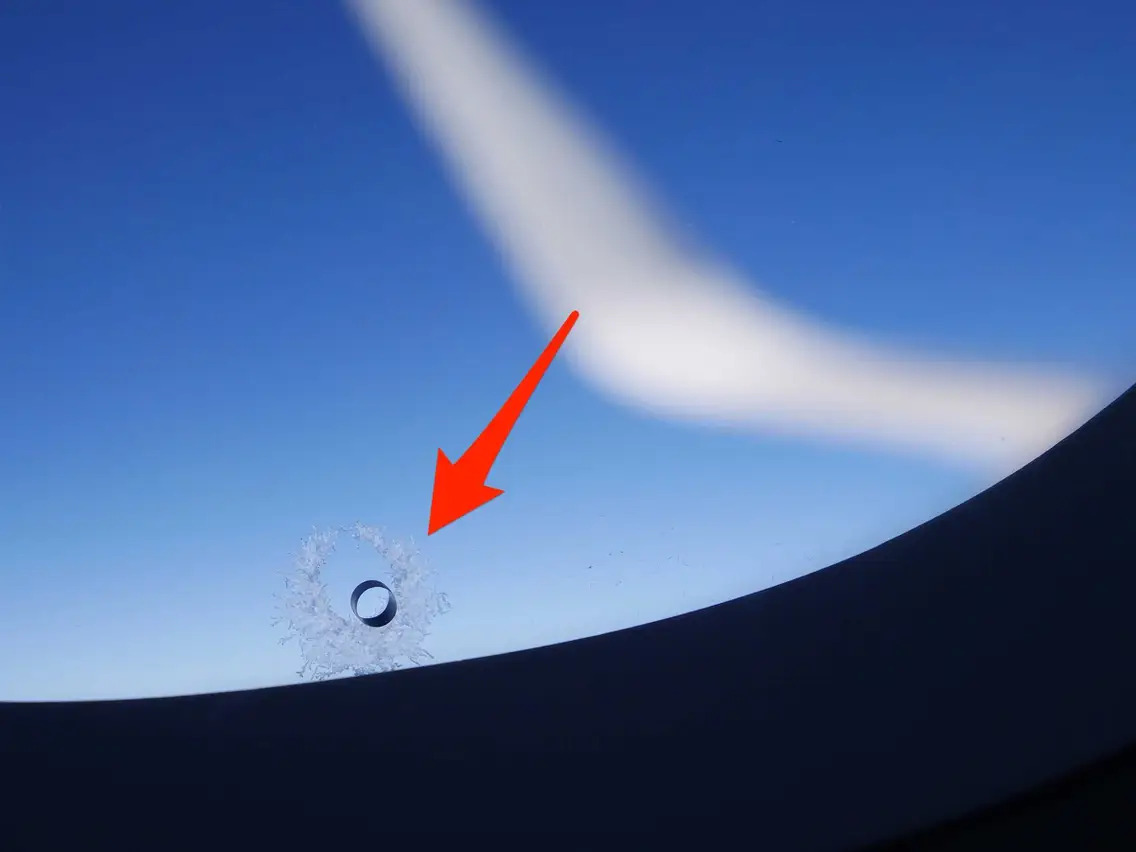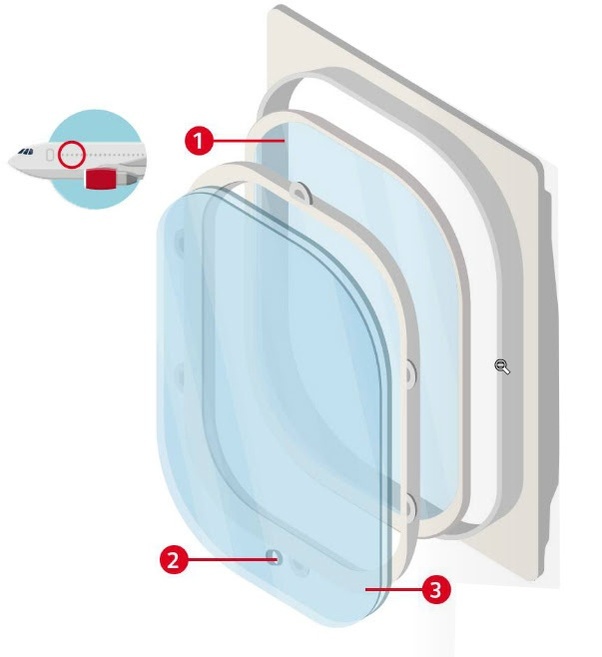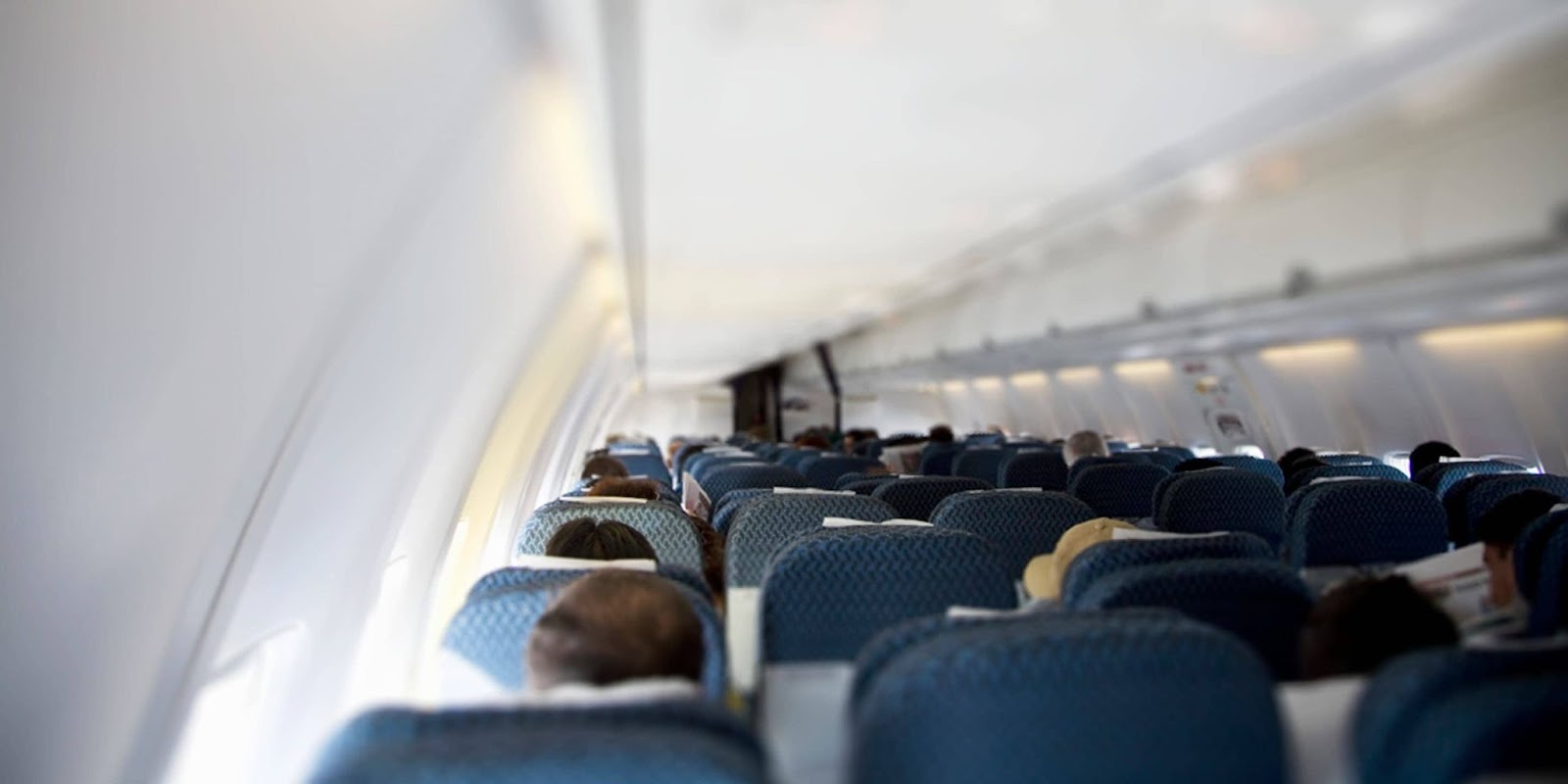The mind-blowing reason why plane windows have a tiny hole – Can you guess what it’s for?
- Replies 1
As COVID-19 gradually comes to a full close, more Australians are hopping on a flight to resume their adventures internationally and locally. Some of them noticed an inconspicuous detail on their plane windows for the first time and prompted questions to be raised. Why do some plane windows have tiny holes and what exactly are they for?
The detail is commonly referred to as a ‘bleed hole’ by those from the industry. It’s the tiny opening that’s situated at the bottom of the windows of commercial passenger planes – and you’ll be surprised to know they play an important role to keep passengers safe throughout the flight.
According to aviation experts, the bleed hole helps regulate the amount of pressure exerted onto the window's panes due to high altitudes. It also ensures that if a window ever breaks, the outer pane goes first.
A patent filed by DaimlerChrysler Aerospace Airbus in 1997 detailed how bleed holes work.
On a plane, the air is pressurised by engines that compress it as it moves through a series of fans. To maintain cabin pressure, especially at high altitudes, this air is kept within the cabin using an outflow valve.
Essentially, it works similarly to how a tyre is inflated. The high-pressure air is 'pumped' into the cabin and this air comes from the compression stage of the engines.

What are ‘bleed holes’ for? Source: Business Insider
Then, sensors measure the pressure in the cabin while the outflow valve releases the air at a rate that maintains this pressure.
Due to a lack of oxygen at high altitudes, the plane has to be pressurised to a certain level that will keep passengers safe and comfortable.
Philip Spiers, Head of Advanced Structural Testing Centre at the University of Sheffield Advanced Manufacturing Research Centre (AMRC) with Boeing explained: ‘At high altitudes, there are not enough oxygen molecules to sustain life.’
'Low pressure lowers the boiling points inside the body and at the edge of space, this can cause blood and tears to boil.'
Typically the air inside the cabin is maintained at around 11PSI, which is the level of pressure experienced at around 2,130 metres.
To maintain this pressure, the plane's overall structure needs to follow a design that will efficiently handle the difference between the pressure in the cabin and the outside of the plane.
As a result, windows on commercial planes are made with three panes– an outer, middle and inner that are made of acrylic and glass.

Aeroplane windows are made with three panes. Source: MIT.edu
Mr Spiers continued that the plastic pane works to prevent passengers from getting access to the glass panes placed in the middle and on the outside.
There is a middle pane of glass with a hole in it, then an air gap, followed by an outside pane of glass. This hole maintains the pressure and directs it onto the outer pane instead of the inner pane.
So it's best to avoid touching the bleed hole or covering it in any way so it can do its job effectively while you're flying.
The surprising reason blew the minds of several eager travellers online after a social media post about bleed holes gained traction.
While hundreds of others admitted to 'never noticing' the holes, others raised follow-up questions to ask.
'I have never noticed… But I'm going to start looking for it the next time I travel.’ one woman said.
Another wondered what would happen if all the passengers on a flight unknowingly 'blocked the holes'.

Maintaining the pressure inside the cabin is important. Source: Honeywell Aerospace
Mr Spiers explained: 'If the pane was sealed or didn't have a hole in it, all the pressure in the cabin would act on the inside pane of glass.’
'You want this pressure to act on the outside pane because if there is a problem with the outside, it can easily be spotted during an inspection. You don't want to see the inside pane fail first as the inspectors wouldn't see that.'
'Plus, this gives enough time for the plane to drop to a lower altitude to manage the issue.'
Michal Weiszer, a research fellow at the School of Engineering at the University of Lincoln added:
'During a flight, the cabin is pressurised and therefore it is necessary to equalise the pressure between the inner pane and the actual window, so the outer window holds the load of the pressure difference.’
'Furthermore, the hole prevents moisture from building up between the panes.’
Last but not least, Dr Raf Theunissen, a lecturer in aerodynamics in the Department of Aerospace Engineering at the University of Bristol, said: 'You can understand why aeroplane companies put these additional windows in by just looking at the number of scratches on them.’
'We wouldn't want to have scratches on the actual window because it reduces the strength.'
What are your thoughts about this interesting fact? Have you ever noticed a bleed hole during a flight before? Let us know in the comments!
Learn more about bleed holes by watching the video below:
Source: Tech Insider
The detail is commonly referred to as a ‘bleed hole’ by those from the industry. It’s the tiny opening that’s situated at the bottom of the windows of commercial passenger planes – and you’ll be surprised to know they play an important role to keep passengers safe throughout the flight.
According to aviation experts, the bleed hole helps regulate the amount of pressure exerted onto the window's panes due to high altitudes. It also ensures that if a window ever breaks, the outer pane goes first.
A patent filed by DaimlerChrysler Aerospace Airbus in 1997 detailed how bleed holes work.
On a plane, the air is pressurised by engines that compress it as it moves through a series of fans. To maintain cabin pressure, especially at high altitudes, this air is kept within the cabin using an outflow valve.
Essentially, it works similarly to how a tyre is inflated. The high-pressure air is 'pumped' into the cabin and this air comes from the compression stage of the engines.
What are ‘bleed holes’ for? Source: Business Insider
Then, sensors measure the pressure in the cabin while the outflow valve releases the air at a rate that maintains this pressure.
Due to a lack of oxygen at high altitudes, the plane has to be pressurised to a certain level that will keep passengers safe and comfortable.
Philip Spiers, Head of Advanced Structural Testing Centre at the University of Sheffield Advanced Manufacturing Research Centre (AMRC) with Boeing explained: ‘At high altitudes, there are not enough oxygen molecules to sustain life.’
'Low pressure lowers the boiling points inside the body and at the edge of space, this can cause blood and tears to boil.'
Typically the air inside the cabin is maintained at around 11PSI, which is the level of pressure experienced at around 2,130 metres.
To maintain this pressure, the plane's overall structure needs to follow a design that will efficiently handle the difference between the pressure in the cabin and the outside of the plane.
As a result, windows on commercial planes are made with three panes– an outer, middle and inner that are made of acrylic and glass.
Aeroplane windows are made with three panes. Source: MIT.edu
Mr Spiers continued that the plastic pane works to prevent passengers from getting access to the glass panes placed in the middle and on the outside.
There is a middle pane of glass with a hole in it, then an air gap, followed by an outside pane of glass. This hole maintains the pressure and directs it onto the outer pane instead of the inner pane.
So it's best to avoid touching the bleed hole or covering it in any way so it can do its job effectively while you're flying.
The surprising reason blew the minds of several eager travellers online after a social media post about bleed holes gained traction.
While hundreds of others admitted to 'never noticing' the holes, others raised follow-up questions to ask.
'I have never noticed… But I'm going to start looking for it the next time I travel.’ one woman said.
Another wondered what would happen if all the passengers on a flight unknowingly 'blocked the holes'.
Maintaining the pressure inside the cabin is important. Source: Honeywell Aerospace
Mr Spiers explained: 'If the pane was sealed or didn't have a hole in it, all the pressure in the cabin would act on the inside pane of glass.’
'You want this pressure to act on the outside pane because if there is a problem with the outside, it can easily be spotted during an inspection. You don't want to see the inside pane fail first as the inspectors wouldn't see that.'
'Plus, this gives enough time for the plane to drop to a lower altitude to manage the issue.'
Michal Weiszer, a research fellow at the School of Engineering at the University of Lincoln added:
'During a flight, the cabin is pressurised and therefore it is necessary to equalise the pressure between the inner pane and the actual window, so the outer window holds the load of the pressure difference.’
'Furthermore, the hole prevents moisture from building up between the panes.’
Last but not least, Dr Raf Theunissen, a lecturer in aerodynamics in the Department of Aerospace Engineering at the University of Bristol, said: 'You can understand why aeroplane companies put these additional windows in by just looking at the number of scratches on them.’
'We wouldn't want to have scratches on the actual window because it reduces the strength.'
What are your thoughts about this interesting fact? Have you ever noticed a bleed hole during a flight before? Let us know in the comments!
Learn more about bleed holes by watching the video below:
Source: Tech Insider







